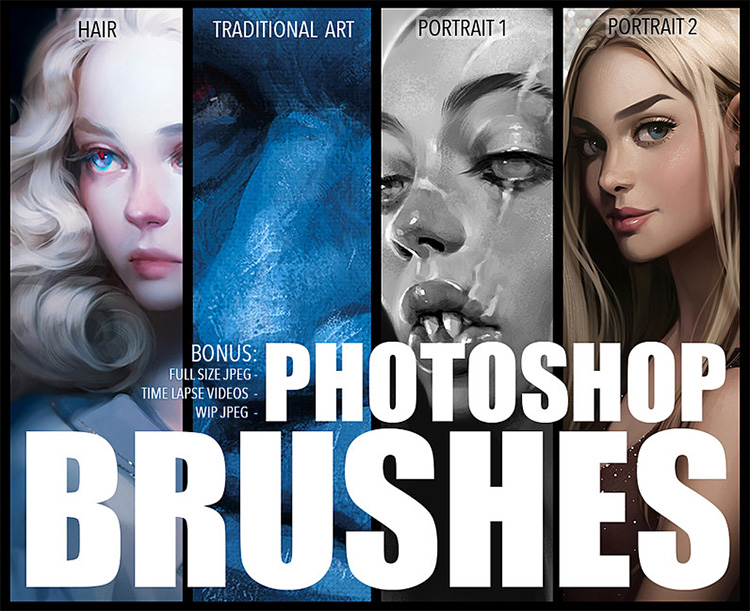

Follow the overall flow of his beard hair. Lightly brush in the base color don’t worry about detail just yet. To add a smooth area of color with variations, choose the fan brush and sample a light area of his beard by alt/option clicking on it. We want to create a soft base color and add some details later. In this example, the best place to start is the subject’s beard. Step 5: Paint in Large Areas of Base Color When you use wet brushes on an area of color, it takes the color that you pinpointed and blends it with the colors of surrounding pixels, which is a realistic technique for portrait painting.

There are many different settings, but a wet, heavy mix will give you a nice mix of colors. Adding layers at regular intervals also gives you some room for mistakes, because if you get too far off course, or your image isn’t going in the direction that you want it to, you can scrap the latest layer and start a section over again without losing much of your work.Ī good method to simulate an oil painting is to use a mixer brush with a wet setting. On a regular basis, you can add new layers that build upon previous layers, much like a real painting on a real canvas. When using the mixer brush, make sure to have “sample all layers” checked. When you are working on hair, especially hair with a lot of texture, it’s best to use a small or thin brush. I am going to choose the fan brush from the mixer brush presets. Because we don’t want to lose a lot of detail in his beard, we need to use a smaller brush. The subject has a lot of hair, and his beard gives him a lot of character. The subject for this tutorial is going to be a portrait of an elderly gentleman. If you are instead going for a loose or abstract style, then larger, “wet” brushes will be your choice. If you want to include a lot of detail, then you will want to use small brushes, and certain brush types over others. Looking at different painting styles can help you determine which one fits your desired end result. Another thing to consider is the type of effect that you want to achieve. Your choice of subject will determine which brushes you use to simulate the painted portrait effect. Your subject is one of the most important choices that you will make during this process. These simulate different types of common brushes that traditional painters use to create different objects and textures. These options control the different brush settings that simulate different strokes and brush techniques.īesides using different brush tools, you can also use different brush presets. When you click on the brush tool, you will see a new set of options in the top menu bar. The mixer brush tool is found as a sub-tool within the brush tool. You have more control, and your work looks more natural. This makes painting much easier and more natural than it would be with a typical mouse. Conversely, the lighter you brush, the lighter and softer your brush strokes will be. The harder you push, the stronger your brush strokes will be. I have an older model Wacom drawing tablet, which works well with Photoshop and the mixer brush tool, because Wacom tablets have pressure sensitivity that detects how hard you are pressing down on the tablet. It is relatively easy, but there are some details that will make a difference in how realistic your painting appears. However, the mixer brush is a fantastic tool that you can use to turn an existing photograph into a digital painting.
Digital painting brushes software#
It’s difficult for any software program to mimic the realistic effect of painting. Photoshop has always had a brush tool, and it has been mainly used for blending effects and masks.


 0 kommentar(er)
0 kommentar(er)
